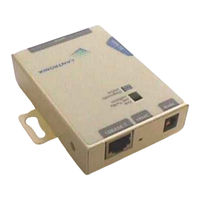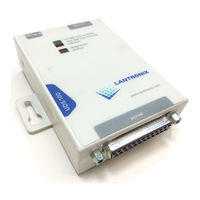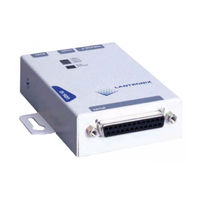Lantronix Device Server UDS 10 External Manuals
Manuals and User Guides for Lantronix Device Server UDS 10 External. We have 3 Lantronix Device Server UDS 10 External manuals available for free PDF download: User Manual, Hardware Manual
Lantronix Device Server UDS 10 User Manual (139 pages)
UDS-10 User Guide
Brand: Lantronix
|
Category: Network Card
|
Size: 0 MB
Table of Contents
Advertisement
Lantronix Device Server UDS 10 User Manual (78 pages)
Lantronix UDS10 and UDS100 User Guide
Table of Contents
Lantronix Device Server UDS 10 Hardware Manual (8 pages)
Brand: Lantronix
|
Category: Network Hardware
|
Size: 0 MB
Advertisement
Advertisement


